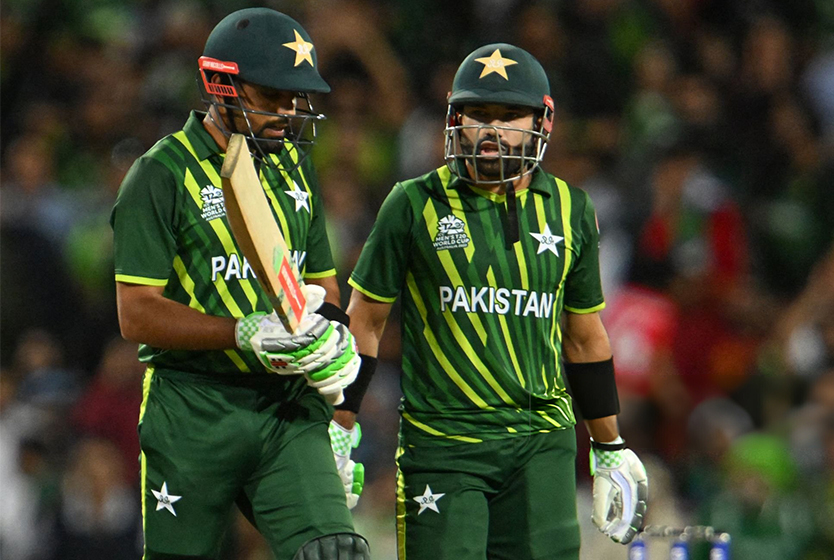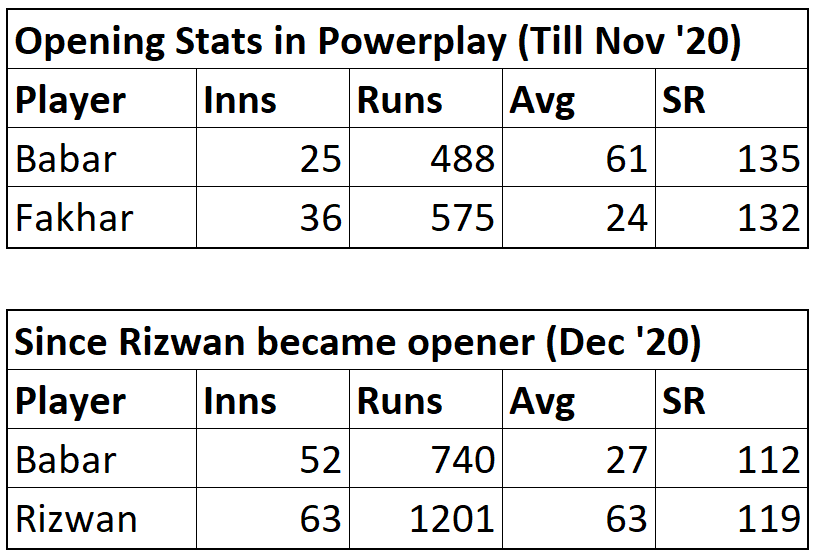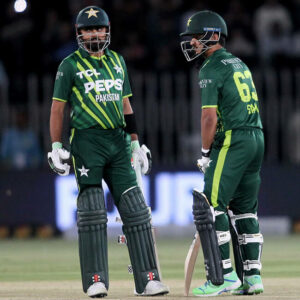
Cracking the Code: Pakistan’s T20I Opening Woes and Unanswered Questions
Pakistan has altered its T20I opening pair by breaking the partnership of Mohammad Rizwan and Babar Azam. However, several unanswered questions persist. Throughout the 5-match T20I series against New Zealand, Pakistan experimented with a new batting order, with Saim Ayub and Rizwan opening in the first 4 T20 matches.
In the initial match, Saim showcased a promising start, scoring 27(8), but failed to convert it into a substantial innings as he was unfortunately run out. Rizwan, too, played a brisk knock of 25(14) but couldn’t capitalize on the opportunity. In the absence of a solid opening partnership, former captain Babar Azam took on the role of a lone fighter in the first three matches, batting at No. 3 with Fakhar Zaman at No. 4.
The decision to break the Rizwan-Babar pair aimed to introduce a more aggressive batter at the opening position, aligning with the modern T20 approach to utilize the powerplay effectively. Before 2020, Pakistan’s T20I opening pair comprised Fakhar Zaman and Babar Azam, contributing to the team’s success under Sarfaraz Ahmed. The Fakhar-Babar duo played a crucial role, with Fakhar taking on the aggressor’s role and Babar anchoring the innings, leading to 11 consecutive series victories, including whitewashes against top teams.
A comparison between the Fakhar-Babar and Rizwan-Babar pairs in powerplays reveals significant differences:
Here are some technical and logical points to focus on. When Fakhar and Babar were the openers, Fakhar had an average of 24, and Babar Azam had an impressive 61. However, it’s noteworthy that the difference in the number of innings and runs is not substantial. This discrepancy can be attributed to the nature of averages – staying not out leads to an increase in average – Babar was dismissed 8/25 times, Fakhar 24/36 times. In his anchor role, Babar seldom lost his wicket in the first six overs. On the other hand, Fakhar, playing aggressively, faced higher chances of getting out early.
Analyzing these statistics, it’s evident that Fakhar and Babar’s partnership brought success, with Fakhar playing aggressively and Babar anchoring. In contrast, Rizwan and Babar, both playing anchor roles, struggled to make effective use of the powerplay. Babar’s average dropped from 61 to 27, and his strike rate decreased from 135 to 112 as an opener. While Rizwan showed a better average, his strike rate remained low at 119.
The decision to break the Rizwan-Babar pair raises new questions, as simply moving Babar to No. 3 doesn’t address the fundamental issue. When an aggressive opener falls early, the team still relies on Rizwan and Babar to navigate the powerplay, repeating the previous challenges. This scenario unfolded in the current series when Saim fell early, and either Babar or Rizwan had to take charge, resulting in wicket losses.
Fakhar Zaman’s dismal performance in the last three years can be attributed to the disorder in Pakistan’s T20I batting order. The Pakistan think tank needs to prioritize devising a flexible T20I batting order that aligns with modern-day requirements, as observed in strategies adopted by other successful teams.
The opinions expressed solely belong to the writer and do not necessarily reflect the views of Grassroots Cricket.








Leave a Reply